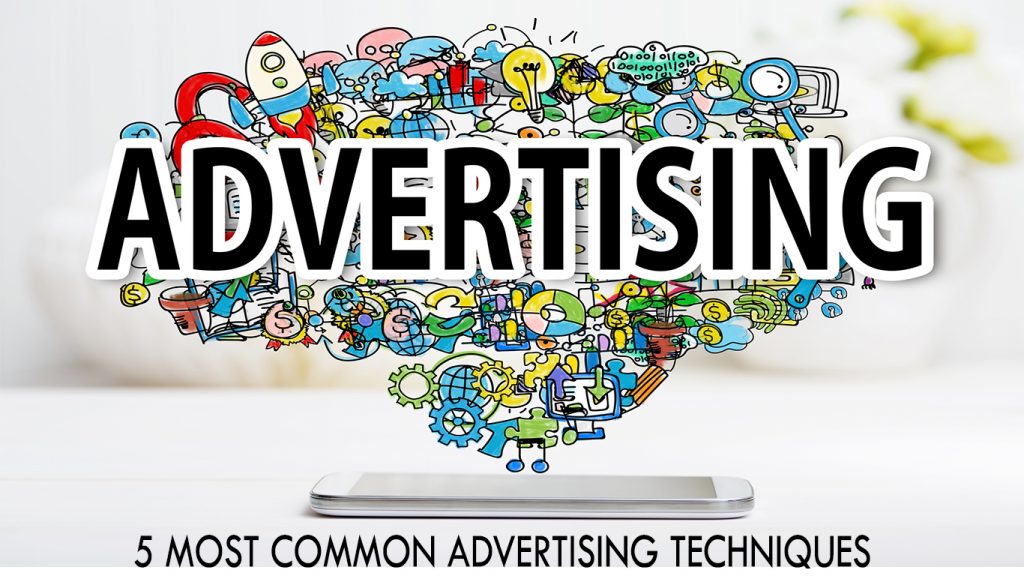Hey there, Looking for 5 Most Common Advertising Techniques? A successful advertisement creates a certain desire for a product in viewers, listeners, or readers. It also provides adequate information on how to fulfill the desire that was created and makes the potential customer feel good about doing so. This article is going to highlight the best five most commonly used advertising techniques.

5 Most Common Advertising Techniques
With so many products and service providers in the marketplace, using a well-proven technique in your advertising can increase the likelihood that your ad dollars will give you back value. Some basic techniques used in propaganda transfer successfully to advertising and they remain the most frequently employed techniques.
The Importance of Using Trends
It will be very beneficial to use what has been working and what has been proven to work to get your desired results. This is because techniques do not perform as great as we think they should. In fact, they are affected by So many factors, therefore, it is important to know which technique has brought results, which one is bringing results and how to make them bring results.
The Five Common Advertising Techniques
These techniques have been proven to work over the years. They are game-winners when it comes to advertising. Here they are;
The Use of Repetition
Repetition is a simple yet very effective technique used to build identity awareness and customer memory. It is very important that customers get to realize who you are and what value you render. Take, for example, advertisements using other successful approaches mention the product or company name more than once. Particularly in television because of its combination of sight and sound, it allows the advertiser to disguise the repetition by changing its delivery (from visual to audio).
Claims Relating to a Product
An advertising technique that not only describes a product but also promotes specific features or makes claims about what a product or service Has done or can do for the potential customers provides successful results by informing, educating, and developing expectations in the heart of the buyer.
Claims can state some facts like “locally grown” or “new, low price”. Claims can also use hype, such as calling one brand of orange juice ”high in vitamin C” or labeling a toy “loved by kids everywhere”. Claims like these can grab a shopper’s attention extensively and hopefully help to close a sale, but try to avoid exaggerations that could be considered untrue, as these could lead to legal problems.
Association and Connection with the Customer
This technique is the darling of them all. Associating a product or company with a certain famous person, catchy jingle, desirable state of being, or powerful emotion creates a strong psychological connection with the potential buyer.
A good example is sporting equipment companies using successful athletes in their ads, automakers displaying their cars in front of mansions, brewers showing their beer consumed by groups of friends having fun, and cosmetic companies signing celebrities to represent their products.
These ads spur up an emotional response in customers, which then is linked to the product being advertised, making it attractive through transference.
Convincing Customers to Join the Bandwagon
The bandwagon technique sells a product or service by instilling trust using the method of convincing the customer that others are using the product and they should join the crowd. Other bandwagon advertisements suggest that the customer is losing out or will be left out if they don’t buy what’s being sold.
These ads often employ “glittering generalities,” words that are linked to highly valued ideas or concepts that evoke instant approval, which may or may not relate to the subject of the advertisement.
Promotions and Rewards
Things like coupons, sweepstakes, games with prizes, and gifts with purchases create excitement, and participation in such encourages customers to build a relationship with the sponsoring product or service.
The attraction of getting something “free” or earning “rewards” makes promotions exciting to customers, thus being successful. Other side techniques like limited-time offers and entry deadlines add urgency to this advertising technique’s call to action.
Like I have said before, these techniques are what some of the biggest and most successful brands are using right now. Try them out for the best results and give us feedback.



